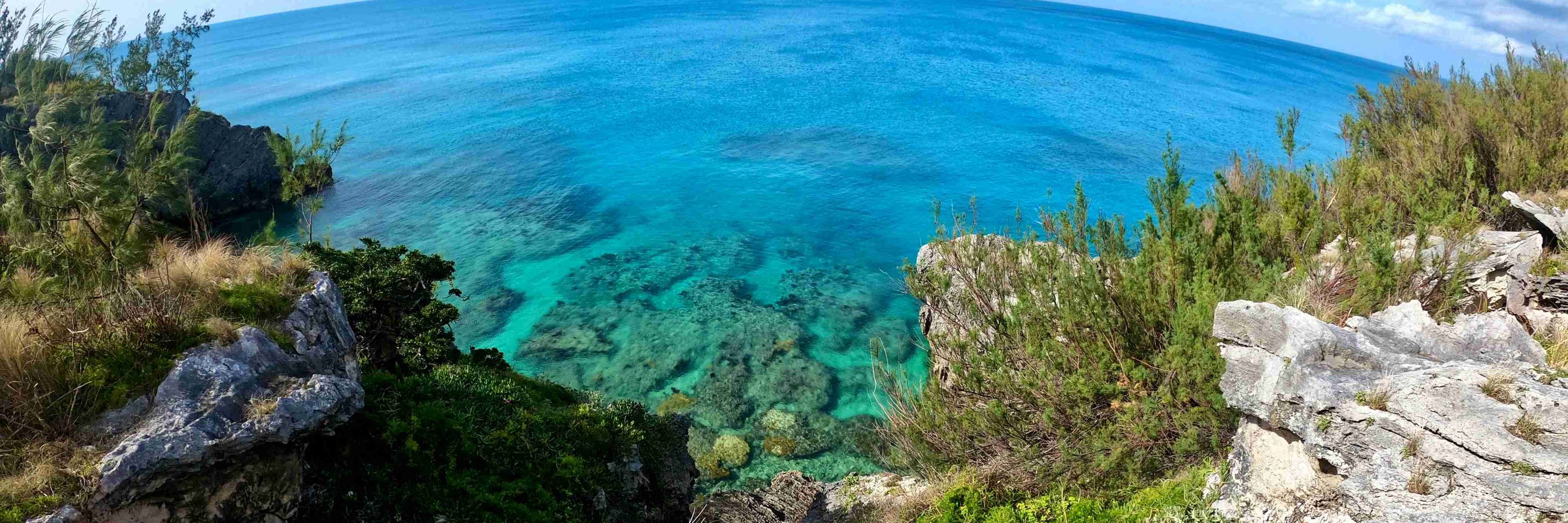
EGU Biogeosciences Division (BG)
@egubg.bsky.social
Biogeosciences Division (BG) of the European Geosciences Union (EGU).
We aim to bring all things #biogeosciences to you and share our blog posts egu.eu/bg/
BG Banner Photo credit: Josue G Millan (distributed via imaggeo.egu.eu)
We aim to bring all things #biogeosciences to you and share our blog posts egu.eu/bg/
BG Banner Photo credit: Josue G Millan (distributed via imaggeo.egu.eu)
Pinned

Registration for the @egu.eu supported Mary Anning Conference closes next week. Talks and discussions on #CO2, #water and #ecosystem function across scales meetings.copernicus.org/mac1-coupling/ in #Bordeaux 10-12th June 2025 at @inrae-france.bsky.social @egubg.bsky.social #biogeosciences
Registration for the @egu.eu supported Mary Anning Conference closes next week. Talks and discussions on #CO2, #water and #ecosystem function across scales meetings.copernicus.org/mac1-coupling/ in #Bordeaux 10-12th June 2025 at @inrae-france.bsky.social @egubg.bsky.social #biogeosciences
New article in Biogeosciences #EGU by Kaleigh R. Block et al ⬇️

Influence of carbon source and iron oxide minerals on methane production and magnetic mineral formation in salt marsh sediments
Abstract. Salt marshes can emit significant methane to the atmosphere. These emissions are highly variable, but the cause of this variability is not well understood. Although methanogenesis should be…
bg.copernicus.org
November 3, 2025 at 4:52 PM
New article in Biogeosciences #EGU by Kaleigh R. Block et al ⬇️
New article in Biogeosciences #EGU by Mark Chatting et al ⬇️

Improving marine sediment carbon stock estimates: the role of dry bulk density and predictor adjustments
Abstract. Continental shelves are critical for the global carbon cycle as they store substantial amounts of organic carbon (OC). Shelf sediments can also be subject to considerable anthropogenic…
bg.copernicus.org
November 3, 2025 at 1:15 PM
New article in Biogeosciences #EGU by Mark Chatting et al ⬇️
New article in Biogeosciences #EGU by Yangjie Sheng et al ⬇️

Temperature fluctuation alleviates the negative effects of warming on marine diatoms: comparison between Thalassiosira sp. and Nitzschia closterium f. minutissima
Abstract. Marine phytoplankton are subjected to a wide range of environmental heterogeneity, from mean climate change to natural fluctuations under the climate change scenario. These changes include…
bg.copernicus.org
November 3, 2025 at 10:52 AM
New article in Biogeosciences #EGU by Yangjie Sheng et al ⬇️
New article in Biogeosciences #EGU by Gesa Schulz et al ⬇️
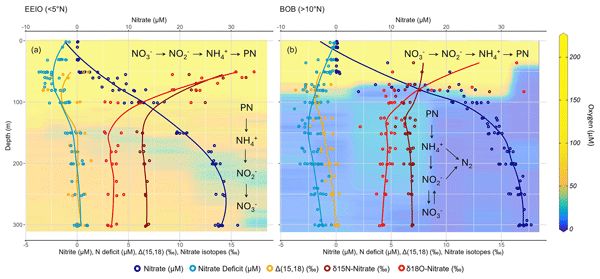
Nitrogen dynamics and nitrate stable isotopes indicate nitrogen loss in the Bay of Bengal
Abstract. Oxygen-minimum zones (OMZs) play an important role in the global oceanic nitrogen cycle because they account for 20 % to 40 % of the global loss of bioavailable nitrogen despite covering…
bg.copernicus.org
November 3, 2025 at 8:03 AM
New article in Biogeosciences #EGU by Gesa Schulz et al ⬇️
New article in Biogeosciences #EGU by Sarah Paradis et al ⬇️

Distribution and sources of organic matter in submarine canyons incising the Gulf of Palermo, Sicily: A multi-parameter investigation
Abstract. Submarine canyons act as conduits of terrigenous and marine organic carbon (OC) to deep-sea environments, although the contribution of each of these sources can largely vary depending on…
bg.copernicus.org
November 1, 2025 at 11:28 AM
New article in Biogeosciences #EGU by Sarah Paradis et al ⬇️
New article in Biogeosciences #EGU by Miriam Seifert et al ⬇️

Interactions between ocean alkalinity enhancement and phytoplankton in an Earth system model
Abstract. The functioning and efficiency of ocean alkalinity enhancement (OAE) as a CO2 removal strategy is well investigated in model studies, but risks for the ecosystem are presently not…
bg.copernicus.org
November 1, 2025 at 8:28 AM
New article in Biogeosciences #EGU by Miriam Seifert et al ⬇️
New article in Biogeosciences #EGU by Riss M. Kell et al ⬇️
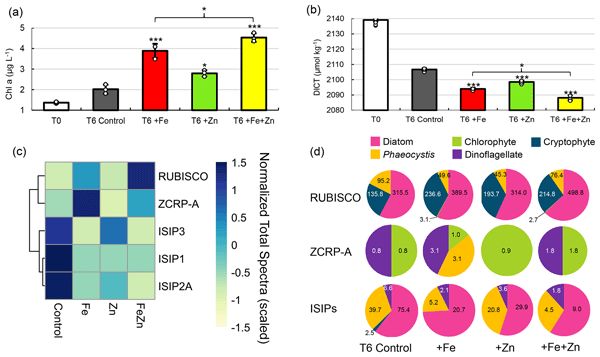
Zinc stimulation of phytoplankton in a low-carbon-dioxide, coastal Antarctic environment: evidence for the Zn hypothesis
Abstract. The ocean acts as a carbon sink, absorbing carbon from the atmosphere and resulting in substantial uptake of anthropogenic CO2 emissions. As biological processes in the oceans such as net…
bg.copernicus.org
October 31, 2025 at 6:27 PM
New article in Biogeosciences #EGU by Riss M. Kell et al ⬇️
New article in Biogeosciences #EGU by Luke Oliver Andrews et al ⬇️

Response and recovery of a Sphagnum peatland from long-term human-induced alkalinisation
Abstract. Northern peatlands are significant terrestrial carbon stores but are increasingly threatened by human activities. Ombrotrophic peatlands, being naturally acidic, are particularly vulnerable…
bg.copernicus.org
October 31, 2025 at 3:27 PM
New article in Biogeosciences #EGU by Luke Oliver Andrews et al ⬇️
New article in Biogeosciences #EGU by Moeka Ono et al ⬇️

The use of newly assimilated photosynthates by soil autotrophic and heterotrophic respiration on a diurnal scale
Abstract. The regulatory role of plant carbohydrate status and root exudation on soil CO2 efflux has been demonstrated, yet the underlying mechanisms, particularly through root respiration, remain…
bg.copernicus.org
October 31, 2025 at 12:27 PM
New article in Biogeosciences #EGU by Moeka Ono et al ⬇️
🗞️ New article in Biogeosciences #EGU by Frank Förster et al ⬇️

Volcanic ash leaching alters the trace metal distribution within the coral holobiont of Stylophora pistillata
Abstract. Explosive volcanic eruptions generate large amounts of volcanic ash that release essential and nonessential trace metals upon deposition in seawater, modifying its chemical composition.…
bg.copernicus.org
October 30, 2025 at 11:01 AM
🗞️ New article in Biogeosciences #EGU by Frank Förster et al ⬇️
🗞️ New article in Biogeosciences #EGU by C. Chad Lloyd et al ⬇️
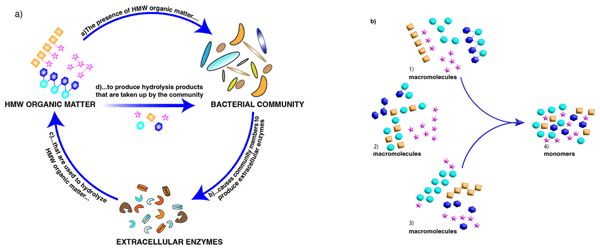
Carbohydrates, enzyme activities, and microbial communities across depth gradients in the western North Atlantic Ocean
Abstract. Heterotrophic bacteria process nearly half of the organic matter produced by phytoplankton in the surface ocean. Much of this organic matter consists of high-molecular-weight (HMW)…
bg.copernicus.org
October 30, 2025 at 8:50 AM
🗞️ New article in Biogeosciences #EGU by C. Chad Lloyd et al ⬇️
🗞️ New article in Biogeosciences #EGU by Marjolaine Verret et al ⬇️

Preservation and degradation of ancient organic matter in mid-Miocene Antarctic permafrost
Abstract. The Antarctic environment is amongst the coldest and driest environments on Earth. The ultraxerous soils in the McMurdo Dry Valleys support exclusively microbial communities, however, 15…
bg.copernicus.org
October 29, 2025 at 4:10 PM
🗞️ New article in Biogeosciences #EGU by Marjolaine Verret et al ⬇️
🗞️ New article in Biogeosciences #EGU by Sean P. Burns et al ⬇️

Using GNSS-based vegetation optical depth, tree sway motion, and eddy covariance to examine evaporation of canopy-intercepted rainfall in a subalpine forest
Abstract. Recent advances in the measurement of water content within a forest have led to new possibilities to study canopy evaporation. We used a pair of Global Navigation Satellite System (GNSS)…
bg.copernicus.org
October 29, 2025 at 11:08 AM
🗞️ New article in Biogeosciences #EGU by Sean P. Burns et al ⬇️
🗞️ New article in Biogeosciences #EGU by Elizabeth Yankovsky et al ⬇️

Impulse response functions as a framework for quantifying ocean-based carbon dioxide removal
Abstract. Limiting global warming to 2 °C by the end of the century requires dramatically reducing CO2 emissions, and also implementing carbon dioxide removal (CDR) technologies. Ocean-based CDR…
bg.copernicus.org
October 29, 2025 at 8:06 AM
🗞️ New article in Biogeosciences #EGU by Elizabeth Yankovsky et al ⬇️
🗞️ New article in Biogeosciences #EGU by Peng Li et al ⬇️

Species-specific relationships between net primary productivity and forest age for subtropical China
Abstract. The relationship between net primary productivity (NPP) and forest age varies among forest species, yet there were no available NPP–age relationships established for various forest species…
bg.copernicus.org
October 28, 2025 at 4:42 PM
🗞️ New article in Biogeosciences #EGU by Peng Li et al ⬇️
🗞️ New article in Biogeosciences #EGU by Sophie L. Baartman et al ⬇️

Isotope discrimination of carbonyl sulfide (34S) and carbon dioxide (13C, 18O) during plant uptake in flow-through chamber experiments
Abstract. Carbonyl sulfide (COS) has been proposed as a proxy for gross primary production (GPP), as it is taken up by plants through a pathway comparable to that of CO2. COS diffuses into the leaf,…
bg.copernicus.org
October 28, 2025 at 10:30 AM
🗞️ New article in Biogeosciences #EGU by Sophie L. Baartman et al ⬇️
🗞️ New article in Biogeosciences #EGU by Joanna L. Corimanya et al ⬇️

Geographic patterns of upward shifts in treeline vegetation across western North America, 1984–2017
Abstract. Previous research has shown that (1) treelines are shifting upward in elevation on high mountain peaks worldwide, and (2) the rate of the upward shift appears to have increased markedly in…
bg.copernicus.org
October 28, 2025 at 8:18 AM
🗞️ New article in Biogeosciences #EGU by Joanna L. Corimanya et al ⬇️
🗞️ New article in Biogeosciences #EGU by Luis Alfredo Pires Barbosa et al ⬇️

Impact of wheat cultivar development on biomass and subsoil carbon input: a case study along an erosion-deposition gradient
Abstract. Crop biomass, especially from belowground, improves soil health and recovery. However, the effects of cultivar traits and erosion on biomass production, particularly root biomass, remain…
bg.copernicus.org
October 27, 2025 at 4:52 PM
🗞️ New article in Biogeosciences #EGU by Luis Alfredo Pires Barbosa et al ⬇️
🌱 Meet the #EGU #Biogeosciences Division Team 2025/26!
From soil microbes to ocean carbon, our BG team brings together diverse voices from across the globe. Get to know the people behind the science: #ECS reps, division officers, policy leads & more
📖 Read more: blogs.egu.eu/divisions/bg...
From soil microbes to ocean carbon, our BG team brings together diverse voices from across the globe. Get to know the people behind the science: #ECS reps, division officers, policy leads & more
📖 Read more: blogs.egu.eu/divisions/bg...

Meet your BG team 2025/2026
The Biogeoscience division team has changed over the last year, and in this blog post, we are delighted to introduce our new team of representatives and describe their roles and research interests so ...
blogs.egu.eu
October 27, 2025 at 8:24 AM
🌱 Meet the #EGU #Biogeosciences Division Team 2025/26!
From soil microbes to ocean carbon, our BG team brings together diverse voices from across the globe. Get to know the people behind the science: #ECS reps, division officers, policy leads & more
📖 Read more: blogs.egu.eu/divisions/bg...
From soil microbes to ocean carbon, our BG team brings together diverse voices from across the globe. Get to know the people behind the science: #ECS reps, division officers, policy leads & more
📖 Read more: blogs.egu.eu/divisions/bg...
🗞️ New article in Biogeosciences #EGU by Jian Hui Li et al ⬇️

Temporal and spatial influences of environmental factors on the distribution of mesopelagic organisms in the North Atlantic Ocean
Abstract. Mesopelagic organisms play a critical role in marine ecosystems and the global carbon cycle, acting as key intermediaries between trophic levels through diel vertical migration (DVM) and…
bg.copernicus.org
October 27, 2025 at 8:15 AM
🗞️ New article in Biogeosciences #EGU by Jian Hui Li et al ⬇️
🗞️ New article in Biogeosciences #EGU by Excellent O. Eboigbe et al ⬇️

Mercury contamination in staple crops impacted by artisanal and small-scale gold mining (ASGM): stable Hg isotopes demonstrate dominance of atmospheric uptake pathway for Hg in crops
Abstract. This study investigates mercury (Hg) biogeochemical cycling and Hg uptake mechanisms in three common staple crops at a contaminated farm (Farm1) ≈ 500 m from an artisanal and small-scale…
bg.copernicus.org
October 27, 2025 at 8:15 AM
🗞️ New article in Biogeosciences #EGU by Excellent O. Eboigbe et al ⬇️
🗞️ New article in Biogeosciences #EGU by Rui Su et al ⬇️
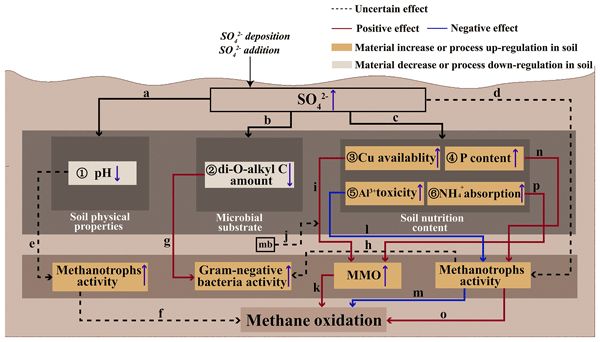
Reviews and syntheses: Contribution of sulfate to aerobic methane oxidation in upland soils – a mini-review
Abstract. Methane (CH4) is a potent greenhouse gas, and its global warming potential is 28 times higher than carbon dioxide (CO2). Various environmental factors influence aerobic CH4 oxidation in…
bg.copernicus.org
October 21, 2025 at 10:01 AM
🗞️ New article in Biogeosciences #EGU by Rui Su et al ⬇️
🗞️ New article in Biogeosciences #EGU by Joshua D. Landis ⬇️

Quantifying new versus old aerosol deposition in forest canopies: throughfall mass balance with fallout radionuclide chronometry
Abstract. Net throughfall (NTF) measurements of the fallout radionuclides (FRNs) 7Be and 210Pb confirm that the atmosphere is a strong net source of particulate matter (PM) and trace metals (TMs) to…
bg.copernicus.org
October 21, 2025 at 7:18 AM
🗞️ New article in Biogeosciences #EGU by Joshua D. Landis ⬇️


